Andrei Rublev
Introduction
The creation of Tarkovsky's second major film was being discussed during the production of Ivan's Childhood , and with the usual Soviet efficiency and control, took a lot longer to be completed than those who should have had artistic control had planned.
Many cuts and revisions later, this 185/6 minute film was the version Tarkovsky was able to release under the circumstances and is the one he considered the best available, yet the Criterion edition of the film is, at 205 minutes, an arguably more 'authentic' director's cut. I haven't seen this version yet, and so won't be commenting on any diffferences.
The plot revolves around the journey Andrei Rublev makes from young, impressionable and extremely talented monk and artist, to an older, more bitter and cynical man before a 'Paulean' moment reverses his decline into complete despair. As many of the details of Rublev's life are unknown, much of the film is built upon a few well-known historical happenings which occurred around the time he was alive, yet in which he wan't necessarily involved himself. In fact, Rublev's character is often just used as an observer and commentator and is almost employed just as an extra in some scenes.
Audio and Visual
The enhanced mono sound is clear enough for all the dialogue, yet much of the music appears tinny and a little confined although it's still very effective. The speakers certainly get a workout in the sacking of Vladimir and bell casting.
Visually, things are a little mixed, with much of the restoration of the black and white film stock appearing as-new, and as vivid and dramatic as the best monochrome films, yet some scenes have lasted less-well, especially the Epilogue, when the colour finally arrives and is not as revelatory as perhaps it was originally.
Extras
It took me a while to work out precisely where many of the extras were, despite the blurb on the back of the DVD case. Annoyingly, unless you go through a rather convoluted process of trial and error, the default soundtrack is a French 'voice-over' which even translates the film titles. I would strongly suggest going into the 'Dubbing' menu and choosing Russian, then making sure of things by selecting English subtitles.
Most of the extra items are very short, yet not at all unsatisfying.
Within the 'Chapter Selection' screens on both discs, you may see one or two extra sections, each entitled 'Etude'. These are, in fact, eight short films which have connections with subjects in the feature itself, and seem to have been made over a few decades, spanning much of the Soviet Union's most difficult times.
The most impressive of these is a section on various campanology techniques, where the ringers of the huge bells get up close and personal with, and probably deafened by, the bells they are playing using amazing contraptions to get as many to sound as possible.
We also get to learn about the 'Union of Militant Atheists' in the USSR. Watching this made me think that Henry VIII and Cromwell were, in comparison, complete amateurs at destroying religious and artistic freedom.
The interviews with Tarkovsky's sister and Yuri Nazarov last less than ten minutes between them, and so are a little disappointing. More successful is the colour 'behind the scenes' film prefaced by a couple of sentences from Tarkovsky himself. This is a fascinating insight into how many of the sequences were realised, and is completely silent apart from a rough and ready second movement from Shostakovitch's 5th symphony acting as a soundtrack.
Conclusion
The one thing I love about Tarkovsky's films is that he is a director who believed the medium is as valid an art form as any other, and so everything is thought out and planned meticulously, yet with the understanding that change, sometimes dramatic, is often necessary. Tarkovsky and his team also had to cope with the inevitable censorship issues, but quite often got around them by extending a 'secondary' scene so much that it would overshadow a more important section which was overlooked by the censors and so passed in full.
It doesn't take long to see that Tarkovsky is making an obvious connection between his own life and Rublev's struggle with creating art in an oppressed society. Rublev was a devout Christian, who found his faith and artistic ideals being manipulated by those who were in charge, and who used the same faith as a political tool. Tarkovsky is also an artist, being overseen by a group of people so far removed from a religious ideal, that they have come almost full circle, and preach something else entirely, yet with the same uncompromising zeal.
The film is separated into nine chapters, each being a small part of this imagined life and times, and each being a perfect small film in its own right. There are some anachronistic items, such as the (very improvised) balloon flight at the beginning, but you get to understand very quickly that the metaphor has been let loose and is pretty much running amok at times.
The cinematography is astounding, and is just as much the work of Tarkovsky himself, together with the genius of Vadim Yusov. There are the trademark lingering trees and water shots, and we are also surrounded by animals, all of which are filmed with reverence, yet some scenes in the sacking of Vladimir may distress as it's obvious the more recent legal requirement stating 'no animals were harmed in the making of this movie' doesn't count for much here.
This realism is just part of the impressive overall Medieval look and feel of the film, brought about by a huge amount of research done on the part of Tarkovsky and Konchalovsky. The filth and suffering is tangible in places, and the cruelty (not just to animals) in the 'Vladimir' chapter is gruesome enough to have made me squirm a couple of times.
The acting is natural, and almost seems improvised at times, yet the script always moves the sections forward, and the nine chapters appears fairly seamless.
Anatoli Solonitsyn (Rublev) was an unknown quantity to the Russian audience, but this was quite deliberate. He trained in theatre, and so wasn't exactly new to the business, but Tarkovsky wanted the concentration to the focussed on the character rather than the actor playing him, and Solonitsyn is able to draw you into Rublev's life very easily, despite not saying much throughout most of the film. In fact, silence in a Tarkovsky film is just as important as silence in a great piece of music, giving things a chance to breathe more naturally and for the audience to concentrate. They may not all be concentrating on the same thing of course, but again, when listening to music, everyone feels something different. Tarkovsky offers you the same opportunities when watching his films.
The final chapter is still stunning, despite what I mentioned before. The colours are vivid, yet the decay that has set in over the years is obvious, and is very likely another reminder to the Soviet authorities (and any other regime who enforces its own agenda for social engineering) that even after the rulers have been buried and forgotten, the works of art will remain.
An immense achievement, and an almost perfect DVD to match.

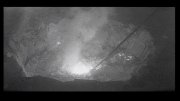
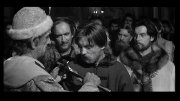

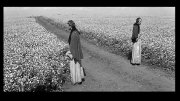
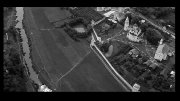
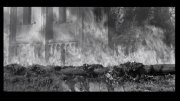
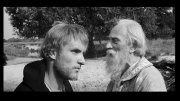
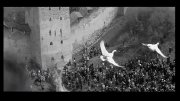







































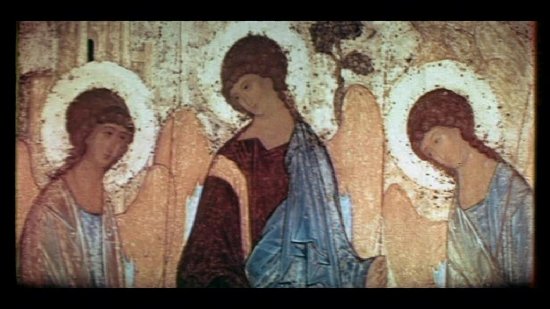
Your Opinions and Comments
Be the first to post a comment!